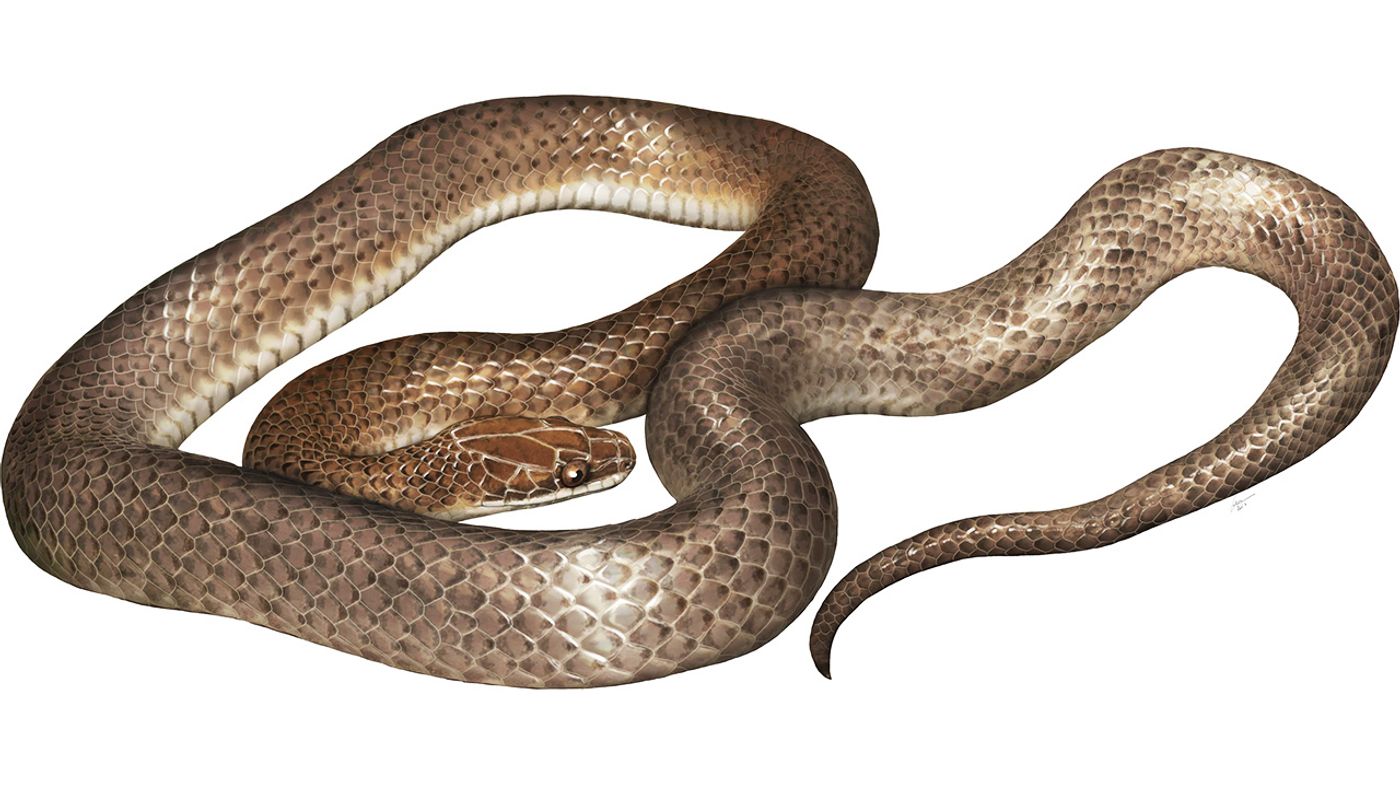A Small Snake Eaten by a Larger Snake Turned Out to be a New Species
More than four decades ago, curious researchers carefully analyzed the stomach contents of a Central American coral snake that had been captured in Chiapas, Mexico. They quickly realized that the serpent had ingested a smaller ten-inch-long snake, but the real challenge came when they attempted to identify the species of the snake turned snack.
Image Credit: University of Texas at Arlington
To their astonishment, the devoured snake didn’t match the profile of any known species, and scientists became hellbent on figuring out what it was. The only problem? – This was much easier said than done; experts have been unable to find another snake just like it, and the lone specimen has been preserved in a museum ever since.
More than 42 years later, a team of herpetologists from the University of Texas at Arlington have revisited the mystery snake. Based on its unique physical characteristics, they’ve identified it as a new species dubbed Cenaspis aenigma, which somewhat humorously translates to “mysterious dinner snake” in Latin. But perhaps most important of all, it belongs to an entirely new genus; the findings appear in the Journal of Herpetology.
"This small snake was obtained now over 40 years ago, and the report of its discovery has been a long time in coming," UTA biology professor Jonathan Campbell and colleagues wrote in the paper. "We were optimistic that additional specimens might be secured, but after at least a dozen more trips into the region spanning several decades, we have been unrewarded."
Related: Man finds half of a snake inside a tree he was chopping down
Among some of the physical features that set Cenapsis apart from other known genera are its subcaudal scale pattern, the structure of its hemipenes, and the form factor of its skull. As it would seem, the scales were undivided, the hemipenes sported cup-like features rather than spines, and skull shape was consistent with that of a burrowing snake.
While no one has officially unearthed another Cenapsis aenigma specimen since its initial revealing in 1976, the researchers don’t yet believe that the species is extinct or in any state of endangerment. Instead, they attribute its elusiveness to its burrowing lifestyle; it’s likely that the species eludes us because it spends most of its time underground where it can’t be seen.
"This provides evidence of just how secretive some snakes can be," Campbell said. "Combine their elusive habits with restricted ranges and some snakes do not turn up often."
Related: Rare two-headed snake discovered in Virginia
Although Cenapsis enigma is the first and only of its genus to be discovered by scientists in more than 40 years, it’s entirely possible that additional subsets of the genus exist in the range where it was discovered. The researchers urge local governments to consider this range for protected status such that thriving species there remain both undisturbed and discoverable.
It remains to be seen whether scientists will ever actually find another Cenapsis enigma, but hunts of this nature tend to fuel excitement for continued exploration. With a little luck, perhaps we’ll learn more about the species or its relatives in the near future.
Source: The University of Texas at Arlington, Journal of Herpetology, Snake Country









